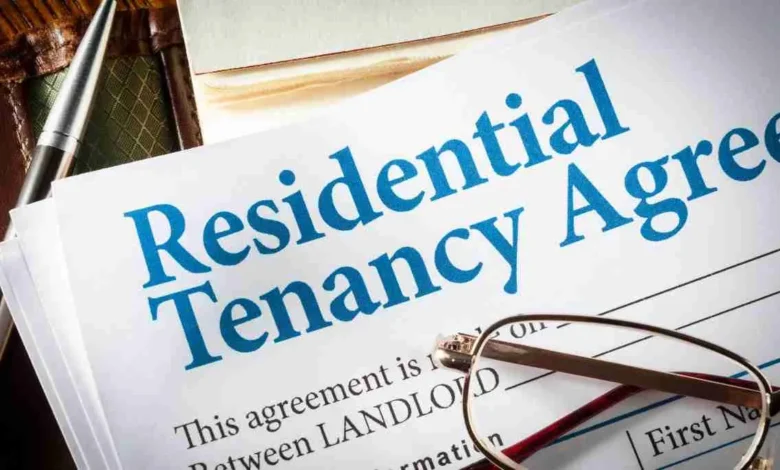Understanding Tenancy Agreements in the UK

When renting a property in the UK, one of the most important documents you will come across is the tenancy agreement. Whether you are a landlord or a tenant, understanding this legal contract is crucial to ensure that both parties are fully aware of their rights and responsibilities. Trusted local professionals such as Whitegates Doncaster estate agents often emphasise the importance of reading and understanding this agreement before signing, as it forms the foundation of the rental relationship.
What is a Tenancy Agreement?
A tenancy agreement is a legally binding contract between a landlord and a tenant that sets out the terms and conditions of renting a property. It protects both sides by clearly outlining expectations, responsibilities, and obligations. While it can be written or verbal, a written tenancy agreement is strongly recommended as it provides a clear record that can prevent disputes later on.
In most cases, tenancy agreements in the UK follow a standard format, but details may vary depending on the property, landlord, and type of tenancy.
Types of Tenancy Agreements in the UK
The most common form of tenancy agreement is the Assured Shorthold Tenancy (AST). Introduced under the Housing Act 1988, the AST has become the default type of tenancy in England and Wales. It usually runs for a fixed period, such as six or twelve months, after which it may continue on a rolling basis if neither party chooses to end it.
Other types of tenancy agreements include:
- Assured Tenancy – Offers tenants stronger rights, often found in older tenancies prior to 1989.
- Regulated Tenancy – Tenancies that began before 1989 with even greater protection for tenants.
- Excluded Tenancy or Licence – Common in lodger arrangements, where the tenant shares living space with the landlord.
Understanding which tenancy applies to your situation is key to knowing what rights and protections you have.
Key Elements of a Tenancy Agreement
Every tenancy agreement should contain certain essential details. Some of the most important include:
- Names of Parties – Clearly stating who the landlord and tenant are.
- Property Address – The exact address of the property being rented.
- Tenancy Term – How long the tenancy will last, whether fixed-term or periodic.
- Rent Details – The amount of rent, when it is due, and how it should be paid.
- Deposit Information – How much deposit is required and which government-approved scheme will protect it.
- Tenant and Landlord Responsibilities – Covering repairs, maintenance, and use of the property.
- Notice Periods – The length of notice each party must give to end the tenancy.
Having these details in writing ensures both landlord and tenant understand their obligations from the outset.
Rights and Responsibilities of Tenants
Tenants in the UK are entitled to certain legal rights, regardless of what the tenancy agreement states. These include the right to live in a property that is safe and in good repair, protection from unfair eviction, and having their deposit protected in a government-approved scheme.
At the same time, tenants are responsible for paying rent on time, keeping the property in good condition, and respecting the terms of the tenancy. Breaching these responsibilities can result in eviction or financial penalties.
Rights and Responsibilities of Landlords
Landlords also have legal rights and duties under UK law. They are entitled to receive rent as agreed and expect tenants to look after the property. However, they are also legally obliged to maintain the structure and safety of the property, ensure appliances and systems such as heating and electricity are safe, and provide at least 24 hours’ notice before entering the property, except in emergencies.
Failure to comply with these responsibilities can result in legal action or fines.
Why a Tenancy Agreement Matters
Many disputes between landlords and tenants arise due to misunderstandings or lack of clarity in the rental arrangement. A well-written tenancy agreement prevents these problems by setting everything out clearly in advance.
For landlords, it provides legal protection if a tenant fails to pay rent or damages the property. For tenants, it ensures their rights are respected and helps prevent sudden or unfair changes in rent or tenancy conditions.
Common Mistakes to Avoid
When entering into a tenancy agreement, both landlords and tenants should avoid these common pitfalls:
- Not Reading the Agreement Fully – Many sign without carefully checking the details, leading to unpleasant surprises later.
- Ignoring Deposit Protection Rules – Landlords must protect deposits in a government-approved scheme within 30 days.
- Failing to Agree on Repairs and Maintenance – Clearly define who is responsible for what.
- Verbal Agreements Only – Always ensure the terms are put in writing for future reference.
Tips for Tenants Before Signing
- Always ask questions if something in the agreement is unclear.
- Check the rent, deposit, and notice period carefully.
- Confirm the landlord’s contact details are correct.
- Ensure the property’s inventory is included and accurate.
- Keep a signed copy of the agreement for your records.
Final Thoughts
Understanding tenancy agreements in the UK is vital for both tenants and landlords. These documents are more than just formalities – they provide the framework for a fair and secure rental relationship. By knowing your rights, responsibilities, and the key details to look out for, you can enter into a tenancy with confidence and avoid future disputes.
Whether you are moving into your first rental property or letting one out, taking the time to read and fully understand the tenancy agreement is an investment in peace of mind.



